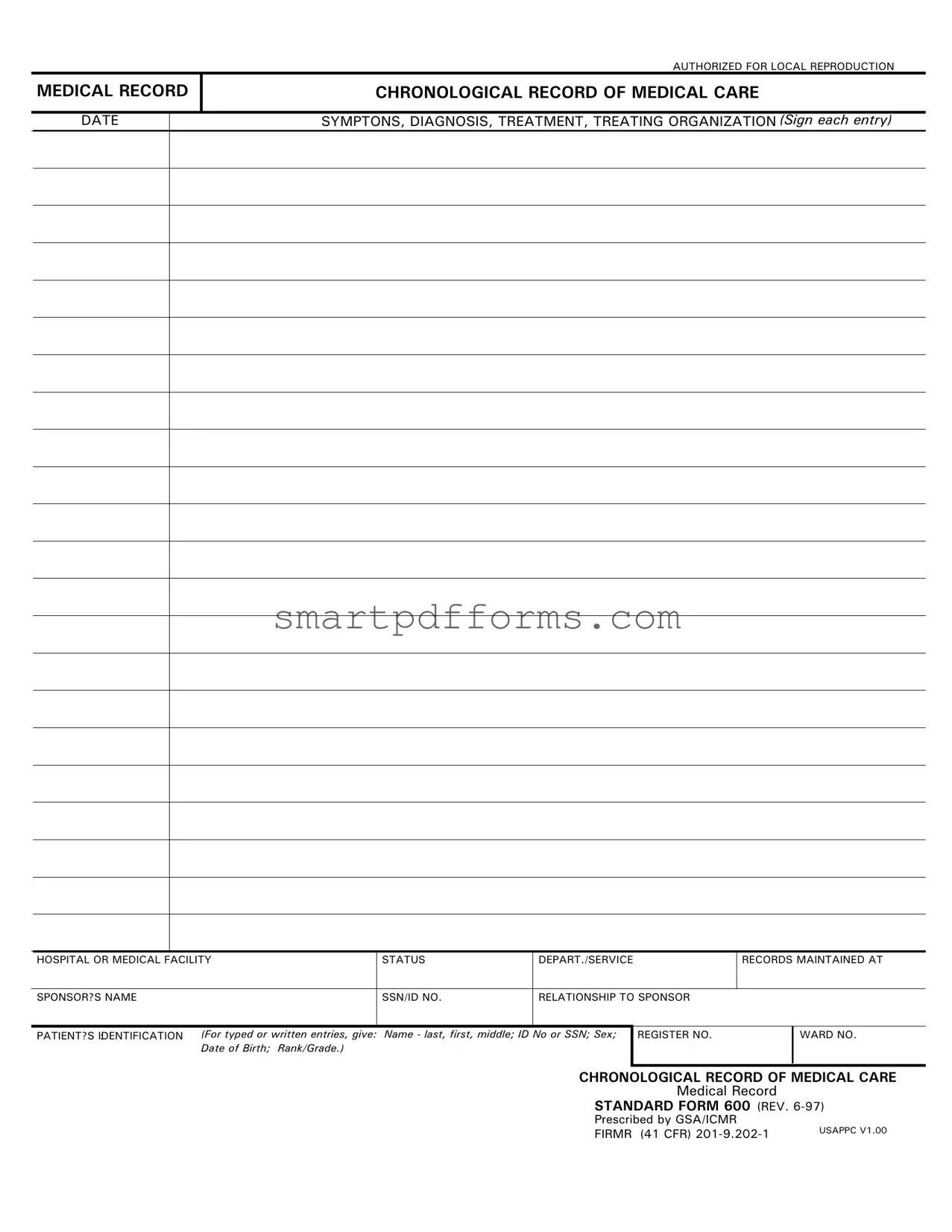Navigating the landscape of healthcare documentation can often seem daunting, especially when it comes to comprehending the various forms necessary for ensuring a comprehensive medical history is maintained. Among these, the Standard Form 600 (SF 600) plays a crucial role in chronicling an individual's medical care journey. Used predominantly within military and certain government agency settings, the SF 600 form is meticulously designed to capture a wide array of health-related information. This includes the documentation of symptoms, diagnoses, treatments received, and details concerning the treating organization or medical facility. Authorized for local reproduction, this form serves not just as a record of medical consultations and interventions but also provides a historical account of an individual's medical status, which can be pivotal in ensuring continuity of care. Additionally, it includes vital identifiers such as the patient's name, identification number or Social Security Number (SSN), gender, date of birth, and rank or grade where applicable, reinforcing its utility in managing the healthcare of individuals within structured organizations. The significance of this document is further highlighted by its requirement for signature on each entry, underscoring the accountability and verification process within healthcare documentation.

